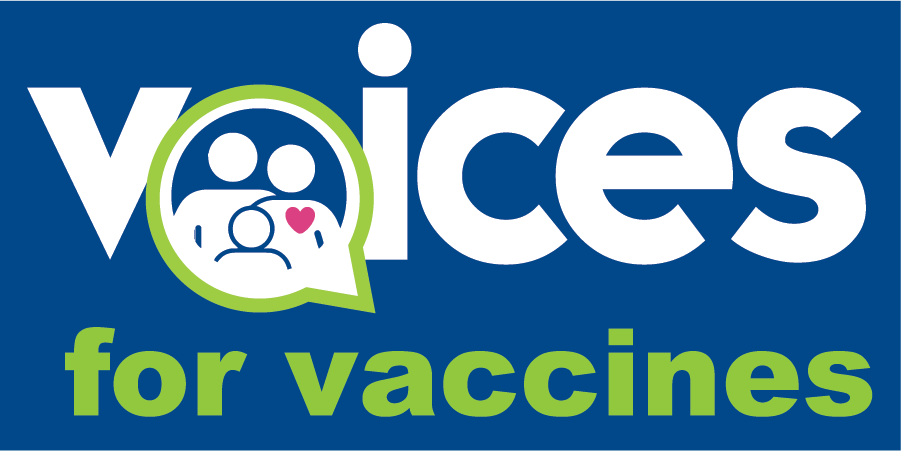How to Host a Vaccination Clinic as a
Community-Based Organization
Step 1: Determine your goal, target audience, and demographic.
Vaccination providers handle all aspects of vaccine administration, from on-site set-up, clinical staffing, and other significant logistics, such as purchasing and administering vaccines, to the registration and documentation of vaccinations.
Vaccination providers in your area include:
- Local, county, or state health departments
- Pharmacies
- Community Health Centers
- Federally Qualified Health Centers (FQHC)
- Schools
- Doctors, Nurse Practitioners, Physician Assistants, hospitals, etc.
- Vaccines For Children (VFC) Providers
Contact the City Manager during the early stages of your planning process to determine if you need any permits before hosting your vaccination clinic.

Partner organizations to consider for collaboration:
- Food Banks (Participants could pick up food and receive vaccinations.)
- Fire Department
- Police Department
- Other public organizations
Step 2: Identify and select a vaccination provider.
Work with the vaccination provider you selected to choose a date, time, and location for your vaccination clinic. The vaccination provider or administrator you partner with will identify and assign the clinical roles and responsibilities. You can determine who among your organization will oversee the registration process for participants attending the clinic.
Other important considerations
Transportation
- Public transportation for participants attending the clinic
Logistics and facilities management:
- Building and bathroom access
- Physical space requirements
- Accommodations for those with disabilities
- Technology requirements
Community engagement and outreach:
- A designated area or person to address questions participants may have about other vaccines (HPV, meningitis, flu, etc.)
- Other community activities taken into consideration when scheduling
Operational efficiency:
- Extended hours for organization staff
- Clinic timing (e.g. weekend clinics for participants who cannot make it throughout the workweek)
- Security and participant navigation and management
You may choose to host your vaccination clinic at a community location where people can safely and efficiently gather like:
- Community recreation centers (YMCA, Boys & Girls Club, etc.)
- Community health centers or gyms • Schools
- Houses of worship
- Note: Research before you reach out to a faith-based organization and get involved in helping with the clinic.
- Manufactured housing parks
- Minor or professional league sports events (Baseball, Football, etc.)
- Consider holding a mobile, a drive-through, or a drive-up clinic
Step 3: Pick a date and a location for your vaccination clinic.
Team up with the selected vaccination provider to create outreach materials for your community that describe the vaccination clinic.
1 – Reach out to Voices for Vaccines and Families Fighting Flu when promoting your clinic, for help with PR, marketing, and exposure
2 – Include information in your outreach materials such as:
- Which vaccine(s) will be offered, and why they are highly recommended
- Where and when the vaccine will be offered – Be flexible by offering walk-in or walk-up clinics
- If insurance is needed, which kind of insurance covers the vaccinations
- Whom they can contact if they have questions or concerns
Also, engage, inform, and encourage community members about the importance of vaccination across the lifespan through your organization’s typical communication channels, such as social media, email, text, or phone calls.
3 – Focus on community engagement and collaboration:
- Include community leaders, town managers, the mayor, school and faith leaders, and other important representatives in promoting and supporting the clinic to encourage as many people as possible to attend.
- Partner with health systems, other community-based organizations, and faithbased organizations ahead of time to help get the word out
- Work alongside members of the community to create materials and spread the word.
- Tailor materials toward your target audience (adults, kids, underserved populations, etc.) by collaborating with trusted messengers in the community you are serving.
- Use pictures that are real-life instead of cartoons to provide an accurate representation of the different communities you intend to serve.
- If you use a PSA or another form of promotion on social media or TV, use members of the communities you want to serve within these materials.
- Have these trusted messengers present to support participants by walking them through the vaccination process and making sure they get information about the vaccines in a way that fits their culture and language.
- Have communications translated and available in relevant languages.
Step 4: Promote your vaccination clinics and invite community members to get vaccinated..
- Use YOUR voice as a leader in your community.
- Make sure you, the organization(s) you are partnering with, and other community-based organizations post about the clinic across social media platforms to have a greater reach.
- Ask your partner(s) to write articles or letters about the vaccination clinic in their newsletters or local newspapers.
- Highlight local personal stories that will emphasize the importance of vaccination and speak to a person’s emotions.
Step 5: Elements to consider when hosting your vaccination clinic
Check with your vaccine administrator that you have all of the forms needed such as:
- Registration forms
- Vaccine Information Statements
- Informed consent forms
- Vaccine administration documentation forms
- Medical history forms
- Evaluation forms (for participants to provide feedback about their experience)

Ways to make the environment engaging, comfortable, and welcoming:
- Consider the various needs of people, including those with disabilities, minors, and the elderly.
- Think about creative ways to keep kids engaged, such as having a character or mascot present, handing out fidget spinners, and including other fun gadgets.
- Use incentives like bracelets, culturally specific goody bags, and gift cards.
- Incorporate cultural music or food into the event to create a festive atmosphere that promotes inclusivity and unity.
- Use decorations representing various populations. These decorations could include flags, artwork, or traditional decorations from different ethnic backgrounds.
- Organize cultural celebrations or festivals in conjunction with the vaccination clinic. You can include performances, workshops, or other activities that celebrate the unique backgrounds of community members.
- Seek the help of an intermediary who can speak with participants to determine any cultural and social norms that may contribute to their vaccination choices. For instance, the varicella vaccine is not promoted similarly in some countries as it is in the U.S., and an intermediary can help change someone’s perspective or mindset about vaccines they may not have considered getting in the past.
Health education resources
- Give participants postcards or informational pamphlets about the importance of vaccinations for respiratory illnesses such as flu, COVID, and RSV, or other vaccine-preventable diseases such as HPV and meningitis to keep the conversation going.
- Voices for Vaccines – Printable Vaccine Fact Sheets
- Families Fighting Flu Printable Educational Materials
- Note: It is also helpful to share a flyer, document, or other resource that lists nearby federally qualified health centers, pharmacies, clinics, or other places where participants can receive these other vaccines.
- Hand out vaccine schedules for children, adolescents, and adults to participants to use and share with others to stay current on vaccines they need.
Share your progress with other organizations and inspire them to replicate your successes in their communities.
- Post photos on social media.
- Note: Ensure to have a photo release consent form printed out and onsite for both kids and adults present before posting any photos online.
- Email Voices for Vaccines and Families Fighting Flu at [email protected] with an update for us to share with our partners.
- Ask your partners to write articles or letters in their newsletters or local newspapers.
- Promote your successes to reporters and across social media.
- Consider creating a trackable social media hashtag for your clinic like #VaxClinic.
Step 6: Share your progress
Share your progress with other organizations and inspire them to replicate your successes in their communities.
- Post photos on social media.
- Note: Ensure to have a photo release consent form printed out and onsite for both kids and adults present before posting any photos online.
- Contact Voices for Vaccines and Families Fighting Flu with an update for us to share with our partners.
- Ask your partners to write articles or letters in their newsletters or local newspapers.
- Promote your successes to reporters and across social media.
- Consider creating a trackable social media hashtag for your clinic like #VaxClinic.
Additional Resources
Best Practices for Vaccination Clinics Held at Various Locations:
- NAIIS Tools to Assist Satellite, Temporary, and Off-Site Vaccination Clinics
- CDC Checklist of Best Practices for Vaccination Clinics
- Immunize.org Supplies You May Need at an Immunization Clinic
- CDC Immunization information systems (IIS)
- AIM School Located Vaccination Clinic Toolkit
Additional Information and resources:
- WADOH Pop-up Vaccination Clinic Guide
- AIM REACH (Racial and Ethnic Approaches to Community Health) Resources
Additional Information and Resources for Clinic Types and Staff Needed:
Resources for Logistics of the Storage of Vaccines:
- CDC Vaccine Storage and Handling Toolkit
- Immunize.org Clinical Resources: Storage & Handling
- NAIIS Ten Principles for Holding SafeVaccination Clinics at Satellite,Temporary, or Off-Site Locations
How to Promote a Flu Shot Clinic:
Promoting a Covid Vaccination (Especially if Partnering with a Health Department):
- CDC (archive) Ways Health Departments Can Help Increase COVID-19 Vaccinations
- AIM How Can Community-Based Organizations Help Support the COVID-19 Vaccination Effort?
Promoting HPV Vaccination:
Free Community Education Training on Vaccine Basics and Communication
© Voices for Vaccines. Excerpts and links may be used by websites and blogs, provided that full and clear credit is given to Voices for Vaccines, with appropriate and specific direction and links to the original content. Parents, providers, advocates, and others may download and duplicate toolkits in print, without alteration, for non-commercial use and with full and proper attribution only.

